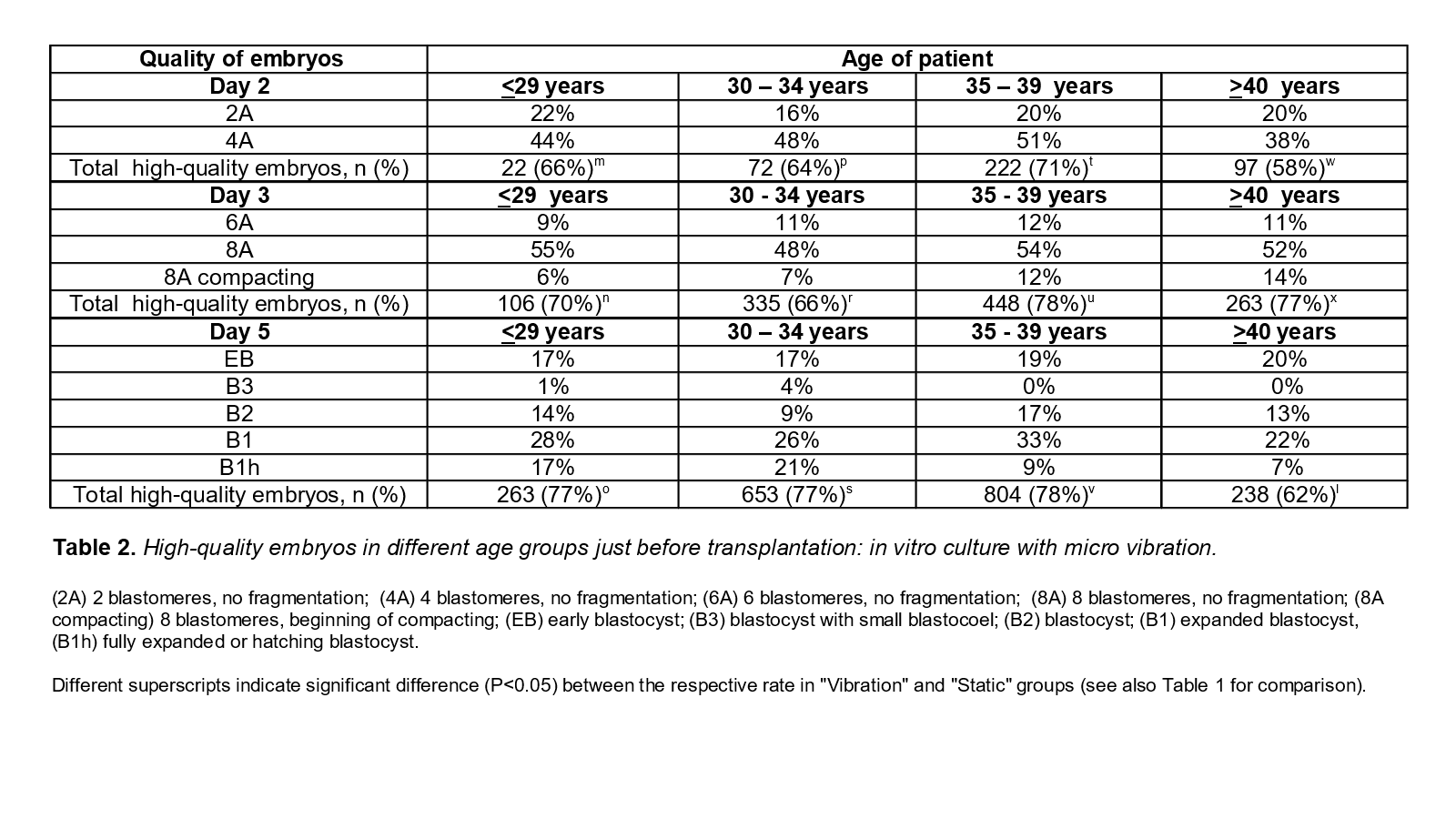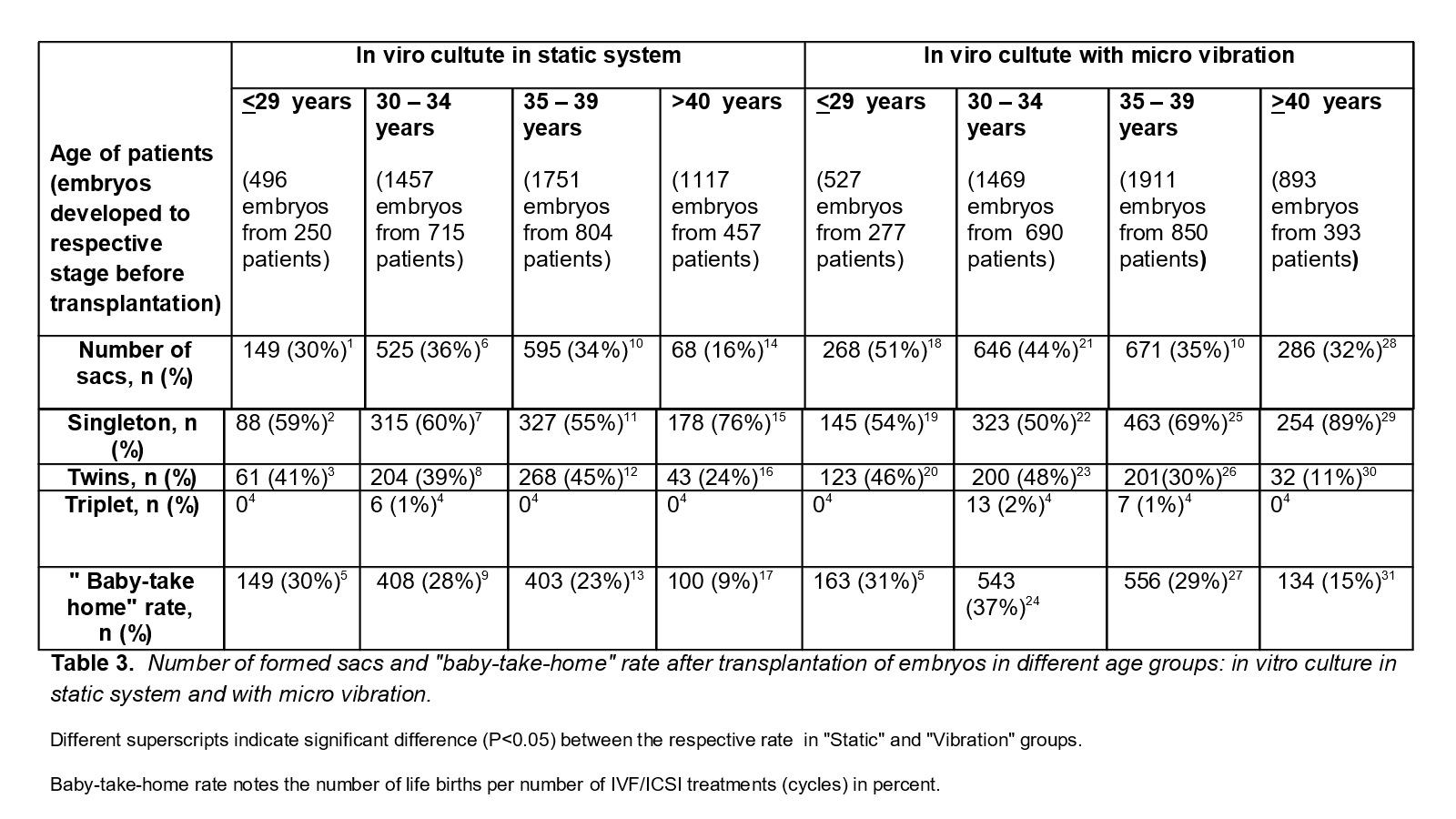Vibrations Simulating Nature
It is known that an embryo developing naturally in vivo is exposed to constant vibrations of around 6 Hz increasing to 20 Hz when the oviductal fluid is mechanically agitated by the cilia (Paltieli et al., 1995).
Viboviduct 1500 imitates the natural complex movements in the oviduct and thus significantly increases in vitro fertilization (IVF) success rates. Viboviduct’s advanced technology and high efficiency allow dynamic execution of defined vibration protocols. The device is designed and developed for use in an incubator. It withstands extreme conditions (moisture and temperatures, foreign bodies and dust, contamination with bacteria and viruses).
Viboviduct 1500 imitates the natural complex movements in the oviduct and thus significantly increases in vitro fertilization (IVF) success rates. Viboviduct’s advanced technology and high efficiency allow dynamic execution of defined vibration protocols. The device is designed and developed for use in an incubator. It withstands extreme conditions (moisture and temperatures, foreign bodies and dust, contamination with bacteria and viruses).
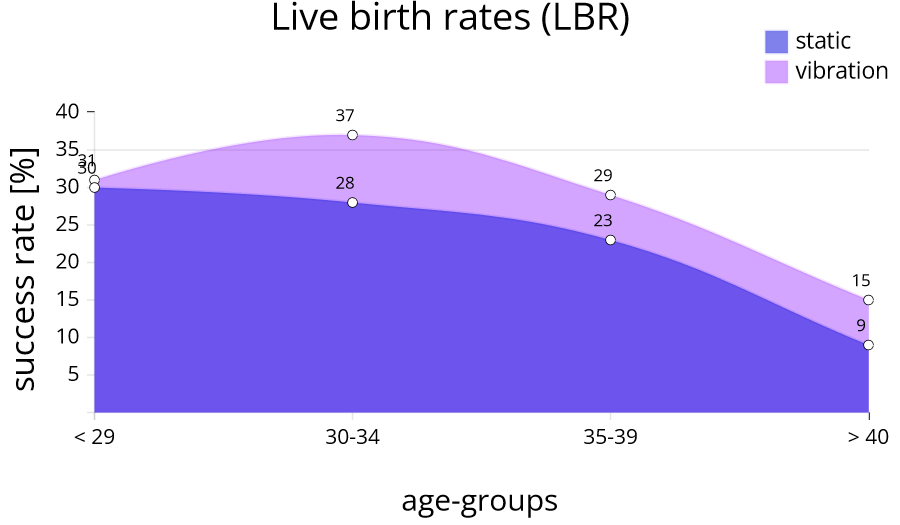
Methodology of VIBOVIDUCT
Natural Fertilization Steps with Viboviduct
Free calcium (Ca2+) plays a crucial role in oocyte fertilization and development. The mechanical stimulation of ciliated epithelial cells in culture induces a wave of increasing Ca2+ that spreads from the stimulated cells to neighboring ones. In the absence of extracellular Ca2+, these mechanically stimulated cells show no change or decrease in Ca2+, whereas Ca2+ increases in neighboring cells. The in vitro culture of human embryos in a medium subjected to regular short intervals of mechanical agitation leads to increased development rates. This type of treatment mimics conditions in nature whereby oviductal fluid is mechanically agitated by the epithelial cilia.
Mechanical stimulation of embryos in surrounding culture fluid induces and amplifies the cell to cell communication and leads to positive effects on embryo development and quality.
An additional effect of micro-vibrations can be found in the continuous refreshment of the medium surrounding the embryo.
Mechanical stimulation of embryos in surrounding culture fluid induces and amplifies the cell to cell communication and leads to positive effects on embryo development and quality.
An additional effect of micro-vibrations can be found in the continuous refreshment of the medium surrounding the embryo.
Long-term study (2011-2015)
The use of the Viboviduct 1500 laboratory device significantly increases rates of pregnancy and improves the conditions that are relevant for the development of an embryo. In vitro culture of embryos under microvibration conditions increases live birth rates (LBR) by up to 67% for patients aged 30 years and older. This has been shown in a recently-published article presenting data on 4,436 couples (aged 26–44 years, median age: 32.8 years) treated between January 2011 and December 2015 (V. Isachenko et al. 2017). The patients were divided into four age-groups: "< 29 years", "30-34 years", "35-39 years" and "> 40 years" (median age: 32.8).
Improvement in LBR (vibration)
Pronuclear embryos (two or three per patient) were cultured in vitro under two different conditions: group 1 (n = 4,821), without mechanical agitation of the culture medium (standard routine conditions); group 2 (n = 4,803), with mechanical agitation. Embryo transfer was performed on day 2, day 3, or day 5 after retrieval of oocytes.The mean numbers of transferred embryos per patient for the static group and the microvibration group were 2.17 ± 0.32 and 2.17 ± 0.36, respectively. Pregnancy was defined as an increase in hCG serum concentration (20 IU/L), which was determined 11 and 13–15 days after embryo transfer. Clinical pregnancy was recorded when the fetal sac was visualized on an ultrasound at gestational weeks 7 to 8 (V. Isachenko et al. 2017).
Results (IVF embryo quality)
Rate of high quality embryos
For Groups 40 years, the following rate of high quality embryos without fragmentation (2 to 4 blastomeres on Day 2; 6 to 8 blastomeres and compacting morula on Day 3; blastocyst, expanded and hatching blastocyst on Day 5) was detected (static vs. vibration, respectively): 65.2% vs. 70.8%, 44.3% vs. 69.3%, 67.% vs. 76.4% (for statistic significant differences between respective rates in these three groups P < 0.05) and 67% vs. 66% (P > 0.1) (Please see the tables below, embryo quality).
Embryo quality static vs. vibration
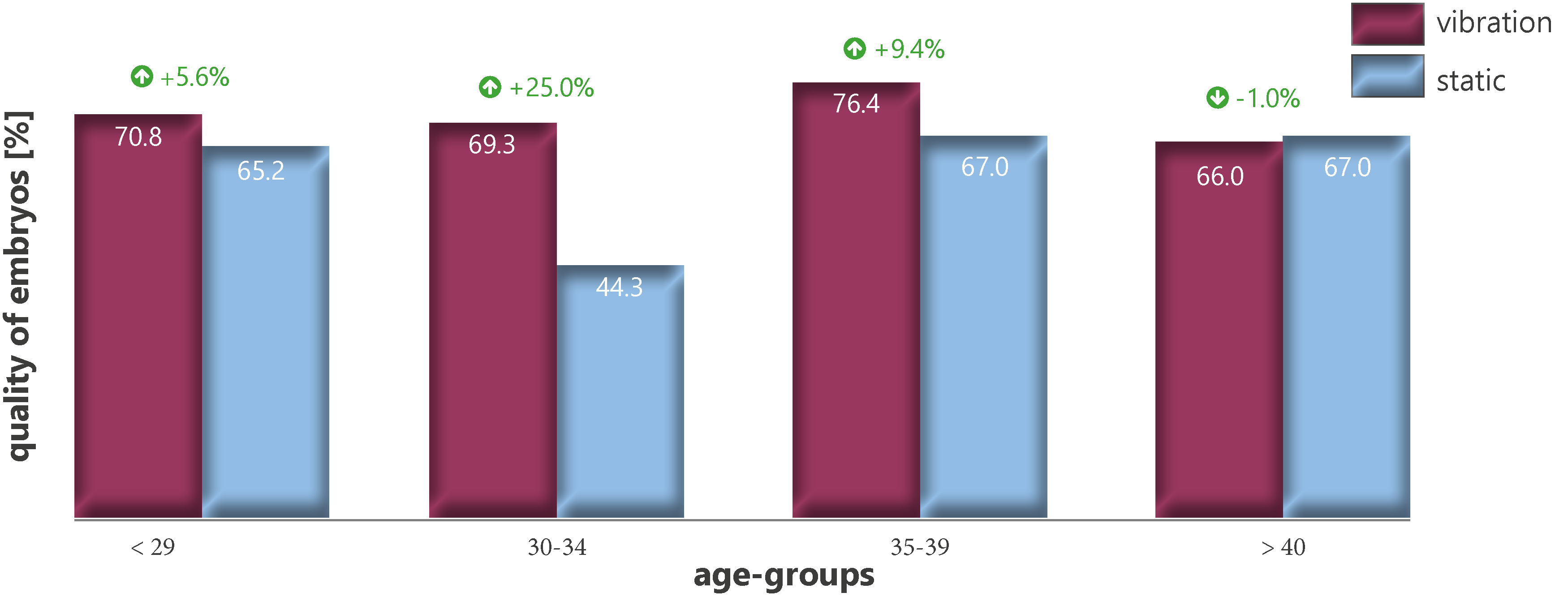
Results (IVF success rate)
Baby-take-home-rates
The following baby-take-home rate was detected for Groups < 29 years, 30-34 years, 35-39 years and > 40 years, respectively (static vs. vibration): 30% vs. 31% (P > 0.1, increasing only on the level of tendency), 28% vs. 37%, 23% vs. 29% and 9% vs. 15% (differences between respective rates in these three groups with P < 0.05) (Please see the table below, baby-take-home).
Success rate static vs. vibration
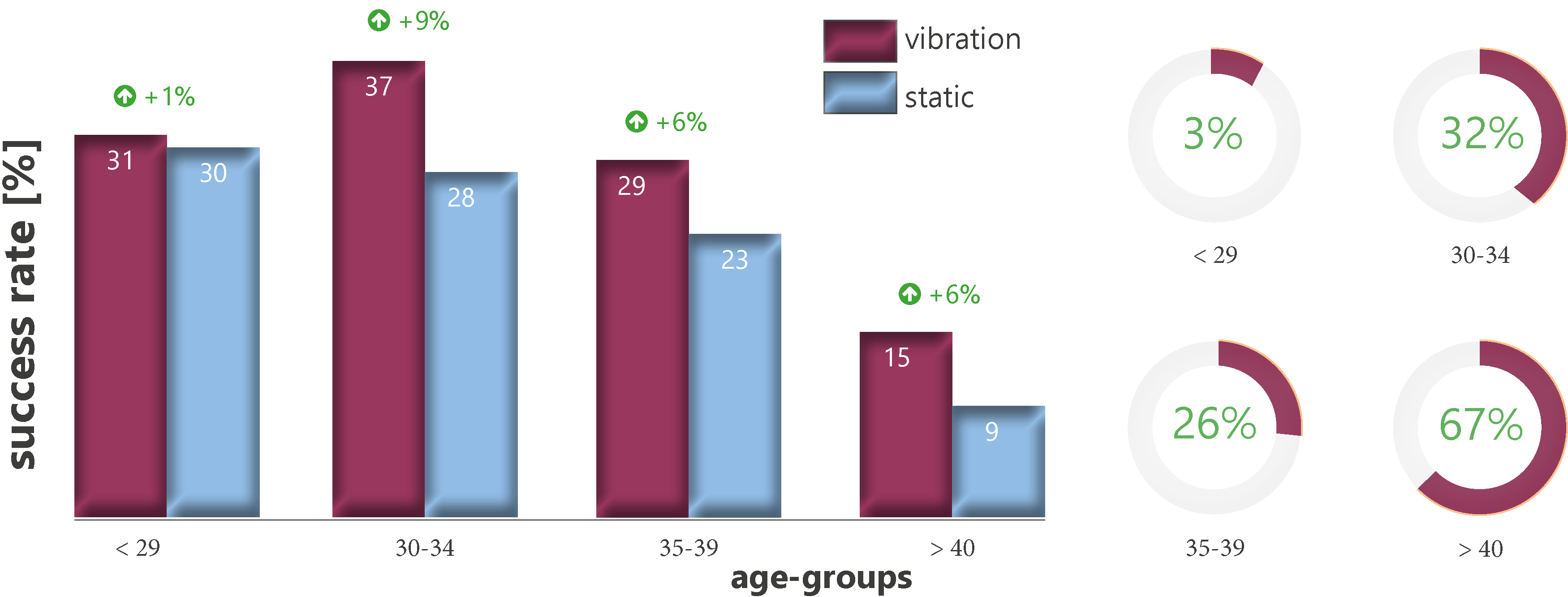
Statistical analysis
Quality of embryos, amount of transferred embryos, amount of morphologically ideal developed embryos (Grade A and B), amount of sacs, pregnancy outcome (ongoing pregnancy, abort, abrasion, biochemical pregnancy) and baby-take-home rate (the number of life births per number of IVF/ICSI treatments (cycles) in percent) were evaluated by ANOVA. Various characteristics were summarized by mean and SD within groups.


